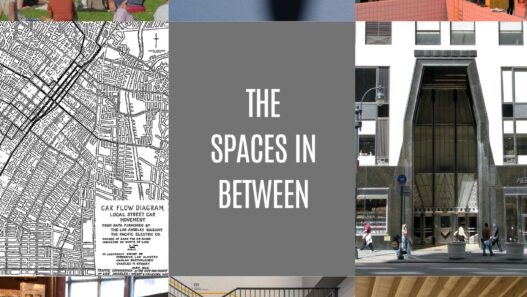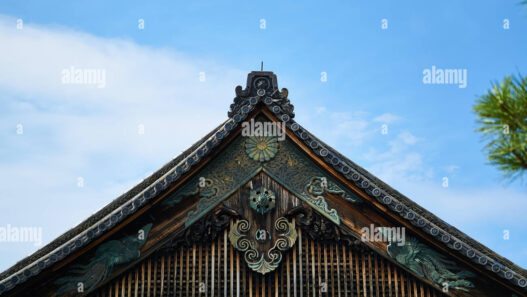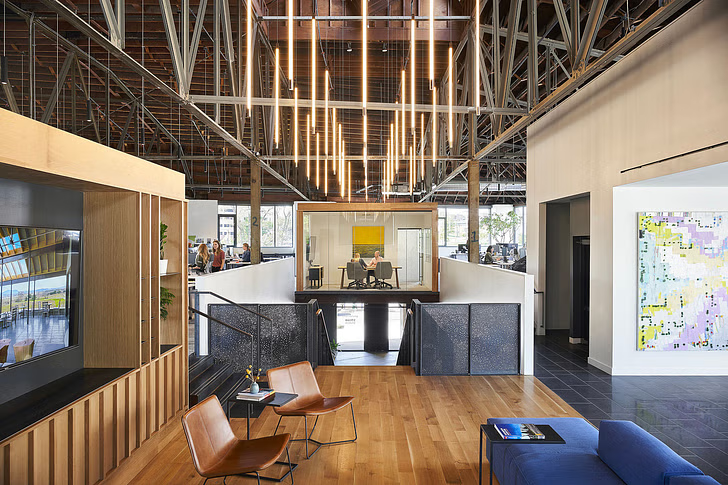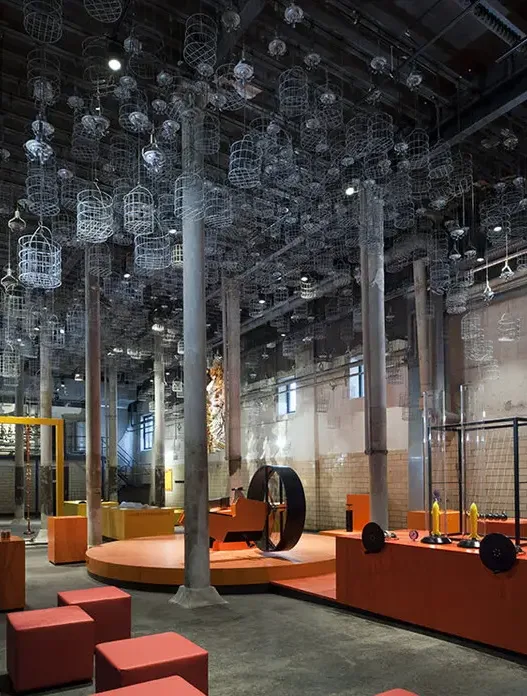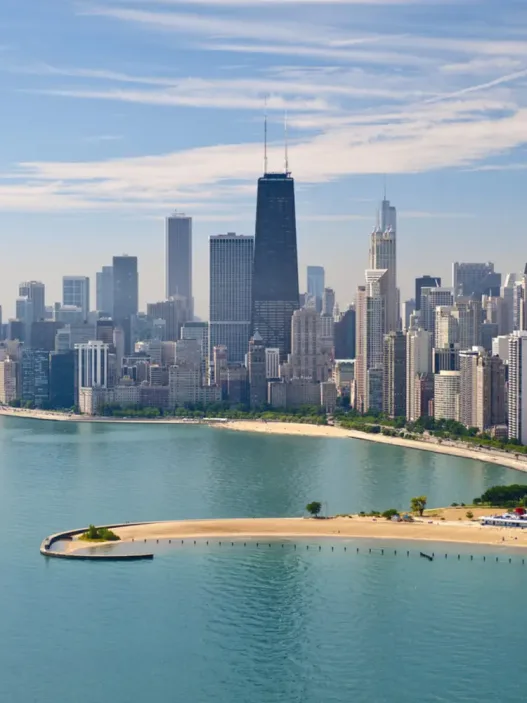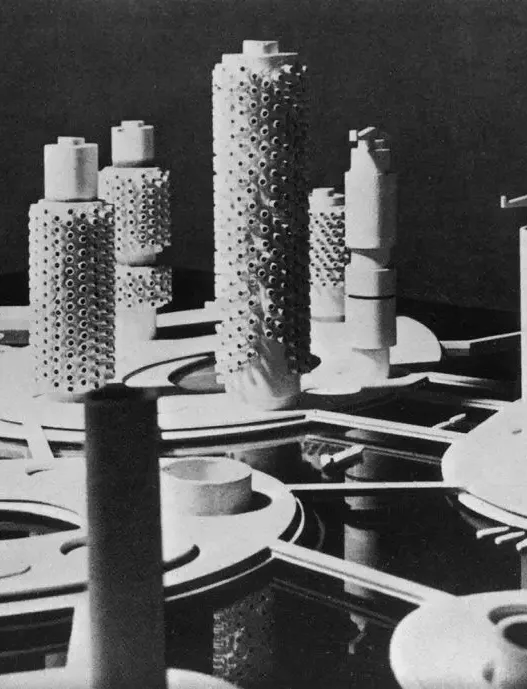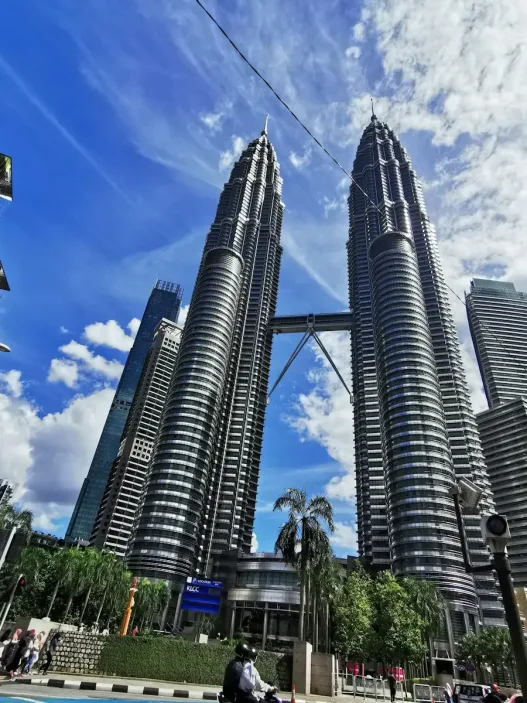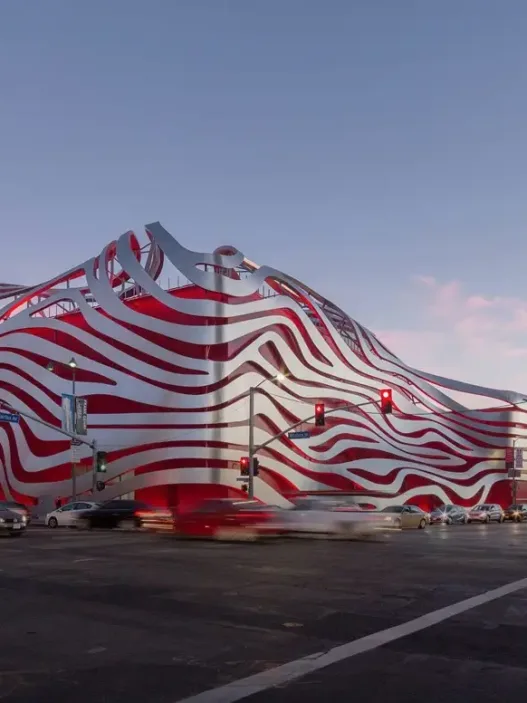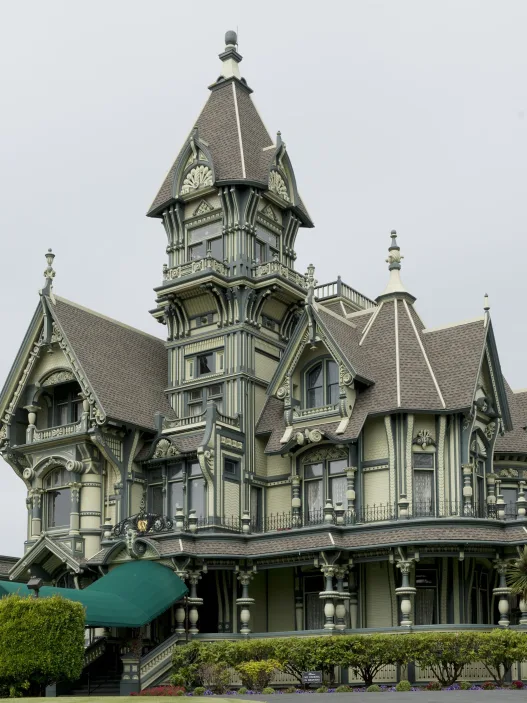Often referred to as the country’s financial capital, Mumbai, India is a vibrant metropolis where past and present exist in delicate balance. The city’s architecture tells a compelling story of its historical evolution, marked by colonial legacy and ongoing urban transformation. From the early influences that shaped the settlement pattern to the bold skyscrapers of today, Mumbai’s architectural journey is a testament to its complex identity.
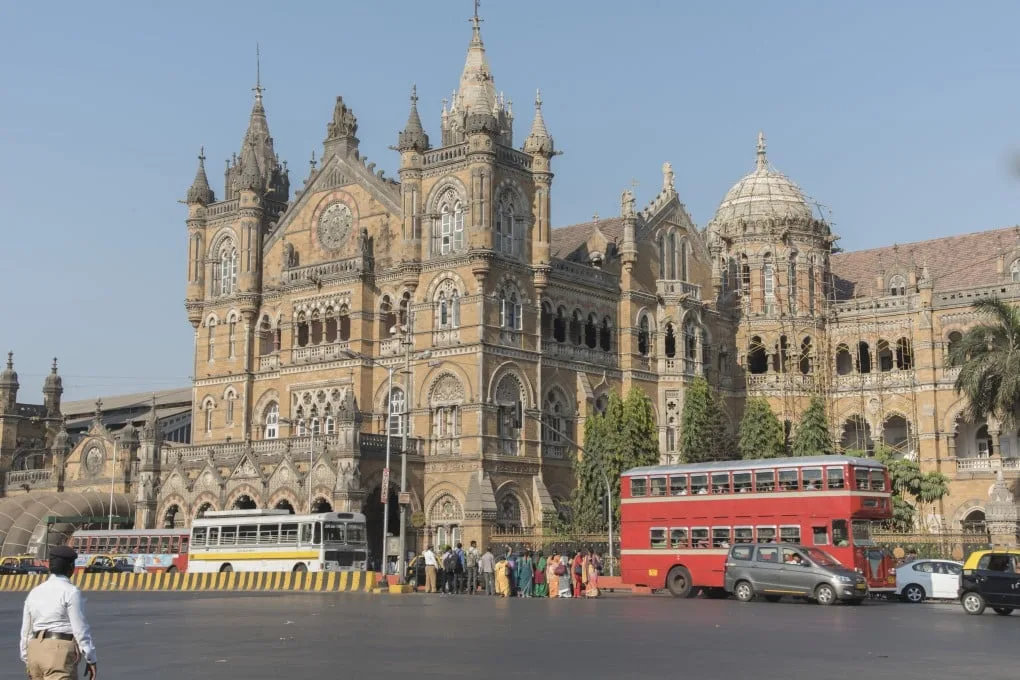
Historical Context of Mumbai Architecture
Mumbai’s architectural landscape is a mosaic of different influences over the centuries. The city’s history is not only a backdrop, but also a key element in its development, reflecting socio-economic and political changes. Each building carries a narrative that reveals the layers of history that shaped the city.
Early Influences and Settlement Patterns
Prior to the arrival of colonial powers, the islands now known as Mumbai were home to various indigenous communities. Early settlements were influenced by coastal geography, with fishing and trade being the main activities. The Portuguese were the first Europeans to arrive in the 16th century and established forts and churches that introduced European architectural styles. This period set the stage for future developments as Mumbai began to transform from a cluster of islands into a bustling commercial centre.
The natural harbour attracted merchants from various regions, leading to a fusion of cultures. These early influences laid the groundwork for a city that would become a focal point for trade and migration, resulting in a rich tapestry of architectural styles.
Colonial Period Developments
The British colonial period marked a significant transformation in the architectural landscape of Mumbai. The city underwent a dramatic transformation as the colonial powers sought to impose their vision of urban planning. Magnificent structures such as the Victoria Terminus, now known as the Chhatrapati Shivaji Maharaj Terminus, exemplify the Gothic Revival style that was prominent during this period. This station served not only as a critical transport hub but also as a symbol of British imperial ambitions.
Public buildings such as the Bombay High Court and Mumbai University displayed elements of neoclassical design, reflecting the British desire to project power and refinement. Victorian buildings and streets lined with ornate facades emerged and laid the foundation for a distinctive urban character. Yet, this architectural development often came at the expense of local communities, as many were displaced to make way for these grand designs.
Post-Independence Architectural Changes
Following India’s independence in 1947, Mumbai experienced a new wave of architectural expression that sought to shed the legacy of colonialism. This period witnessed the emergence of modernist architecture characterised by simplicity and functionality. Architects such as Charles Correa and Balkrishna Doshi pioneered designs that integrated local materials and cultural elements reflecting a newfound national identity.
The iconic Bharat Bhavan and the National Centre for the Performing Arts are examples of this shift, combining modern principles with the essence of Indian culture. This period also witnessed the rise of residential complexes and high-rise buildings, responding to the growing population and the demands of urbanisation. However, challenges such as inadequate infrastructure and social inequality have become increasingly evident, leading to ongoing debates about the future of the city.
The Role of Trade and Business
Mumbai’s architectural evolution cannot be separated from its role as a commercial powerhouse. The city has been a magnet for entrepreneurs, migrants and labourers contributing to its dynamic economy. Iconic structures such as the Bombay Stock Exchange and various banks reflect the city’s financial power and status as a global centre of commerce.
Moreover, the transformation of spaces such as the Crawford Market illustrates how commerce drives architectural innovation. Originally conceived as a wholesale market, it has adapted over time to serve the changing needs of the city’s residents while retaining its historic charm. This interplay between architecture and commerce continues to shape Mumbai and ensures that the city remains both a historical relic and a modern metropolis.
Preservation Efforts and Challenges
As Mumbai continues to develop, the preservation of its architectural heritage faces significant challenges. Due to urban expansion and the demand for modern infrastructure, many historic buildings are in disrepair or at risk of demolition. Efforts by organisations and local governments to preserve these structures are crucial, but they often conflict with development imperatives.
Initiatives such as the Heritage Protection Committee aim to protect iconic sites by raising awareness of their cultural significance. However, the balance between modernisation and preservation is a delicate issue. The ongoing dialogue on how to honour the past while adapting to the future reflects Mumbai’s resilience and adaptability as a city.
In conclusion, Mumbai’s architectural narrative is a fascinating saga of historical influences, colonial ambitions and modern aspirations. From colonial ruins to contemporary skyscrapers, each building tells a story of the city’s evolution, inviting exploration and appreciation of its rich cultural heritage. As Mumbai moves into the future, the challenge will be to honour its past while embracing the possibilities of the future.
Mumbai, the bustling metropolis on India’s west coast, is a vibrant tapestry of cultures, histories and architectural marvels. The city’s architecture tells stories of colonial ambitions and modern aspirations, reflecting the complex layers of its past while adapting to contemporary needs. Among the most striking features of this urban landscape are the iconic colonial buildings that stand as testaments to a bygone era, yet continue to shape the city’s identity.
Iconic Colonial Buildings
Colonial architecture in Mumbai is not just a relic of history; it is a bridge connecting the past to the present. Each building reflects the aspirations and aesthetics of its time, adding to the character and charm of the city. With their majestic facades and intricate designs, these buildings still function in the vibrant life of modern Mumbai and provide a glimpse into the city’s colonial past.
Gateway of India
The Gateway of India is perhaps Mumbai’s most recognisable symbol. Built to commemorate the visit of King George V and Queen Mary, this monumental arch stands proudly against the Arabian Sea. The Indo-Saracenic architectural style combines elements of Indian and Islamic design, displaying intricate latticework and grand arches. The gateway serves not only as a historical monument, but also as a bustling hub for tourists and locals alike, marking the starting point for ferries to nearby attractions such as Elephanta Island.
Beyond its architectural beauty, India Gate has been the scene of important historical events, including the departure of British troops in 1948, symbolising India’s newfound independence. Today, it embodies the spirit of Mumbai as a convergence city as a meeting point for people from diverse backgrounds.
Chhatrapati Shivaji Maharaj Terminus
Chhatrapati Shivaji Maharaj Terminus, formerly known as Victoria Terminus, is a UNESCO World Heritage Site and a striking example of Victorian Gothic architecture. Completed in 1888, the station is characterised by its large clock tower, elaborate stone carvings and vibrant stained glass windows. It serves as a crucial hub for the city’s suburban railway network, facilitating the daily commute of millions.
This architectural masterpiece is not just a transport hub; it is a living space that connects the heart of Mumbai to its outskirts. The hustle and bustle within its walls reflects the dynamic energy of the city. The terminal is an example of how colonial architecture can harmoniously coexist with modern infrastructure, serving both functional and aesthetic purposes.
Bombay High Court
Established in 1862, the Bombay High Court is another architectural gem showcasing the splendour of colonial design. Its impressive Neo-Gothic structure, adorned with pointed arches and intricate detailing, stands out amidst the cityscape. The court’s imposing facade is matched by the fact that it is one of India’s oldest high courts and plays an important role in the country’s legal framework.
The court not only serves as a place of justice, but also attracts architecture enthusiasts who appreciate its historical and aesthetic value. The court’s presence in the city reflects the enduring legacy of British rule and underlines the evolution of India’s judicial system. The architecture of the court is a reminder of the complexity of colonial history and its lasting impact on modern governance.
Victoria Terminus and its significance
Although often confused with Chhatrapati Shivaji Maharaj Terminus, Victoria Terminus refers to the station’s historic name and its wider significance within Mumbai’s transport system. This bustling terminal is the focal point of the city, connecting different districts and facilitating economic activity. Its architectural style not only represents colonial ambition, but also emphasises the integration of functionality into design.
Victoria Terminus is often celebrated for its lively atmosphere, where the sounds of trains mingle with the chatter of passengers. This vibrant ambience reflects the pulse of Mumbai and demonstrates how historic buildings continue to play vital roles in the urban fabric. The splendour of the station is awe-inspiring and serves as a daily reminder of the city’s rich heritage.
Prince of Wales Museum
The Prince of Wales Museum, now known as the Chhatrapati Shivaji Maharaj Vastu Sangrahalaya, was established to honour the visit of the Prince of Wales. This museum is one of the finest examples of Indo-Saracenic architecture with arched doorways, domes and beautiful gardens. Inside, it houses an impressive collection of artefacts ranging from ancient sculptures to contemporary art, showcasing the rich cultural fabric of India.
The museum not only preserves history but also engages the public through exhibitions and educational programmes, making it a dynamic space for learning and discovery. The architecture of the museum complements the collections within, inviting visitors to appreciate both the art and the building itself. The Prince of Wales Museum exemplifies how colonial heritage can be transformed into cultural and educational centres, bridging the gap between the past and contemporary society.
In sum, Mumbai’s iconic colonial structures are not just buildings; they are historical narratives that continue to influence the city’s identity. They reflect the era of colonial ambition while adapting to the needs of a modern urban landscape. As Mumbai transforms, these architectural gems remain constant, reminding us of the complex dance between history and contemporary life.
Modern Architectural Innovations
A city pulsating with life, Mumbai is a fascinating blend of colonial history and modern aspirations. Its skyline, a mix of historic buildings and contemporary structures, tells a story of resilience and transformation. As the city continues to develop, modern architectural innovations play an important role in shaping the city’s identity, addressing urban challenges and responding to the needs of a diverse population.
Skyscrapers and Urban Density
In a city where space is at a premium, skyscrapers have become the hallmark of Mumbai’s modern landscape. These tall structures not only symbolise economic growth, but also provide a solution to the challenges of urban density. With a population of over one million, Mumbai’s vertical growth is a strategic response to the urgent need for residential and commercial space.
Consider the residential skyscraper Palais Royale, one of the tallest buildings in the city. Its sleek design and innovative construction techniques reflect a commitment to maximising space while maintaining aesthetic appeal. These tall buildings are often equipped with modern amenities, making urban living more comfortable and sustainable. However, the rise of skyscrapers also raises questions about infrastructure, traffic congestion and environmental impact. Balancing growth with liveability remains a critical challenge for urban planners.
Sustainable Architecture in Mumbai
Sustainability has emerged as a guiding principle in Mumbai’s architectural scene. As the city grapples with the effects of climate change and rapid urbanisation, architects and developers are increasingly focusing on eco-friendly designs that minimise environmental impact. Sustainable architecture in Mumbai covers a wide range of practices, from energy-efficient buildings to the integration of green spaces.
One notable example is the construction of buildings that utilise rainwater harvesting systems and solar panels, reducing dependence on municipal resources and promoting energy independence. The Bhendi Bazaar redevelopment project exemplifies this movement, where traditional markets are revitalised with modern, sustainable designs that incorporate natural ventilation and energy-efficient materials. This approach not only reflects environmental stewardship, but also improves the quality of life of residents by creating healthier living spaces.
Impact of Global Architectural Trends
Mumbai’s architectural landscape is not isolated; it is influenced by the global trends shaping modern design. With architects and designers drawing inspiration from around the world, the city has become a melting pot of styles. Features such as open floor plans, minimalist aesthetics and the use of state-of-the-art materials are becoming increasingly common in new developments.
The influence of global architecture can be seen in projects such as the Bandra-Worli Sea Link, a striking bridge that combines functionality with striking visual appeal. Internationally acclaimed for its sleek design and engineering prowess, the bridge positions Mumbai as a city that embraces modernity while respecting its historical context. As architects collaborate across borders, Mumbai’s skyline continues to evolve, reflecting the dynamic interplay between local traditions and global influences.
Public Spaces and Urban Planning
Public spaces are vital to the urban fabric of any city and in Mumbai they serve as crucial spaces for social interaction and civic engagement. As urban planners have recognised the importance of accessible public spaces, initiatives have emerged to transform neglected areas into vibrant community hubs.
The redevelopment of Mumbai’s waterfront areas, such as the recent improvements to Marine Drive, illustrate this trend. These areas not only provide recreational opportunities, but also foster a sense of belonging among residents. Thoughtful urban planning takes into account the needs of pedestrians, cyclists and public transport users, creating an inclusive environment that promotes social cohesion. By prioritising public spaces, Mumbai aims to improve the quality of life of its residents and make the city more livable amidst its rapid growth.
Integration of Technology into Design
The integration of technology into architectural design is revolutionising the way buildings are designed and constructed in Mumbai. From the initial design stage to final construction, technology is playing a crucial role in improving efficiency and precision.
Building Information Modelling (BIM), which is increasingly being adopted in Mumbai, allows architects to create detailed digital representations of structures before they are built. This not only streamlines the design process, but also helps identify potential problems early on, reducing costs and delays. In addition, smart building technologies are becoming increasingly common, enhancing the functionality and sustainability of buildings with features such as automated lighting, climate control and security systems.
The impact of technology goes beyond individual buildings, contributing to the development of smart cities that prioritise connectivity and innovation. As Mumbai embraces these developments, it is poised to become a model for others by demonstrating how technology can enhance urban living in a densely populated environment.
As a result, Mumbai’s modern architectural innovations reflect a city in transition, balancing the legacy of its colonial past with the demands of contemporary life. Through skyscrapers, sustainable practices, global influences, thoughtful urban planning and technological integration, Mumbai continues to redefine itself, ensuring that it remains a vibrant and resilient metropolis for generations to come.
A bustling metropolis on the west coast of India, Mumbai stands as a testament to the fusion of different architectural styles. A city with a rich history, it demonstrates how colonial heritage has merged with contemporary urban transformation. From the majestic structures of the colonial era to the sleek lines of modern design, Mumbai’s architecture tells a story of cultural change, adaptation and innovation.
Fusion of Styles
In Mumbai, architectural styles are not just historical landmarks, but living narratives reflecting the evolution of the city. This fusion is a result of various influences, including local traditions, colonial traces and modern aesthetics. Each style contributes to a unique urban landscape, making Mumbai a living tapestry of architectural expression.
Indo-Saracenic Revival Architecture
Indo-Saracenic Revival architecture is a fascinating blend of Indian and Gothic styles that emerged in the late 19th century. This style reflects the influence of the British Raj on Indian architecture and is characterised by its majestic buildings decorated with intricate carvings, domes and arches. One of the most iconic examples in Mumbai is the Chhatrapati Shivaji Maharaj Terminus, a UNESCO World Heritage Site.
The design of the terminal is a striking blend of Victorian Gothic and Indian elements, displaying features such as pointed arches, elaborate stonework and a central dome reminiscent of traditional Indian architecture. This fusion not only served the practical purpose of accommodating the growing railway network, but also symbolised the power dynamics of the period, when colonial aspirations were blended with local craftsmanship.
Mumbai’s Art Deco Heritage
In the early 20th century, Mumbai embraced the Art Deco movement, which brought a new wave of modernity to the city’s architectural landscape. This style is characterised by its geometric patterns, vibrant colours and streamlined forms that stand in stark contrast to the ornate Indo-Saracenic buildings. Often referred to as the “Queen’s Necklace”, the Marine Drive area has an impressive collection of Art Deco buildings that reflect the optimism and modernity of the period.
These buildings not only enhanced the aesthetic appeal of the city, but also represented a cultural shift towards a more globalised Mumbai. The conservation of these buildings has been an important focus in recent years, emphasising their importance in the architectural narrative and cultural identity of the city.
Contemporary Indian Architecture
As Mumbai continues to grow, contemporary architecture characterised by innovative designs and sustainable practices has emerged. Today, architects are increasingly inspired by the local context, utilising green building techniques and materials that are compatible with the city’s climate and cultural nuances.
One of India’s most vibrant cities, Mumbai is a mesmerising tapestry of architectural styles that reflect its rich history and dynamic evolution. From grand colonial buildings to contemporary skyscrapers, the city exhibits an impressive mix of influences that reveal stories of its past, present and aspirations for the future. In this research, we will examine the various architectural styles that define Mumbai, with a particular focus on their unique characteristics and cultural significance.
Fusion of Styles
Mumbai’s architectural landscape is characterised by a remarkable fusion of styles, each layer adding depth to the city’s identity. This mix is not just aesthetic; it embodies the historical journey of the city, where different cultures and ideologies intersected and influenced each other. As we examine the various architectural movements, we will reveal how they have shaped and continue to influence the urban fabric of Mumbai.
Indo-Saracenic Revival Architecture
Indo-Saracenic Revival architecture stands as a testament to the British colonial period, combining Gothic and Indian architectural traditions. This style emerged in the late 19th century and is exemplified by such notable buildings as the Victoria Terminus (now the Chhatrapati Shivaji Maharaj Terminus) and the Bombay High Court. These buildings often feature pointed arches, domes and intricate carvings, harmoniously integrating elements such as Indian chhatris (high eaves) and Islamic motifs.
The significance of this style lies in its ability to create a sense of place that resonates with both British imperial aspirations and Indian cultural identity. Representing a new architectural language that sought to bridge two different worlds, this style allowed for a unique expression of modernity that respected local heritage. As Mumbai developed, these structures became symbols of civic pride and historical continuity, demonstrating how architecture can reflect complex social narratives.
Mumbai’s Art Deco Heritage
Mumbai’s Art Deco heritage is another striking aspect of its architectural identity, particularly visible in the Marine Drive area. Developed in the 1920s and 1930s, this style is characterised by its geometric shapes, vibrant colours and decorative motifs often taken from nature and local culture. Buildings such as the Eros Cinema and the iconic residential blocks along Marine Drive illustrate the elegance and optimism of the period.
The Art Deco movement in Mumbai was not merely a copy of Western styles; it blended local craftsmanship with international design principles into a distinctly Indian expression. The city’s Art Deco buildings are recognised for their historical and architectural significance and were inscribed on the UNESCO World Heritage List in 2018. This recognition emphasises the importance of preserving these buildings, which not only contribute to Mumbai’s skyline but also reflect the spirit of an era celebrating progress and sophistication.
Contemporary Indian Architecture
As we enter the 21st century, Mumbai’s architectural landscape continues to evolve with contemporary designs that reflect a globalising world while addressing local challenges. Modern skyscrapers such as Palais Royale and Lodha World One showcase innovative engineering and sustainable practices that redefine urban living in a dense metropolis. These buildings often incorporate green technologies and are designed to optimise space, responding to the urgent need for sustainability and resilience in urban planning.
Contemporary Indian architecture in Mumbai also embraces cultural narratives, with architects taking inspiration from local traditions and materials. This approach not only honours the city’s heritage, but also ensures that new developments resonate with the community’s identity. By integrating traditional elements into modern frameworks, architects create spaces that are not only functional but also meaningful, fostering a sense of belonging among residents.
The Role of Local Materials and Techniques
The use of local materials and traditional building techniques plays an important role in Mumbai’s architecture, enhancing sustainability and cultural relevance. From the iconic yellow Mumbai stone to the intricate tile work seen in many historic buildings, these materials embody local character and craftsmanship. Builders often use techniques passed down through generations, ensuring that architectural methods are rooted in the community.
The use of local materials not only supports the economy, but also reduces the environmental impact associated with transporting materials over long distances. Furthermore, structures built with local resources tend to better adapt to the climate of the region, providing natural insulation and durability. This practice emphasises the importance of understanding and respecting local contexts in architectural design and encourages a harmonious relationship between the built environment and its surroundings.
Cultural Significance of Architectural Styles
Mumbai’s diverse architectural styles are not just visual landmarks; they are deeply intertwined with the city’s cultural identity. Each style tells a story that reflects the aspirations and struggles of the people living in the city: Colonial Legacies Intertwined with Modern Urban Transformation
A bustling metropolis on the west coast of India, Mumbai is a city where architectural styles of the past and present coexist in a vibrant tapestry. The skyline is a testament to its rich colonial history, while modern developments reflect dynamic changes in society and technology. The fusion of architectural styles in Mumbai not only tells the story of its colonial heritage, but also showcases the innovative spirit of contemporary India. This journey through Mumbai’s architectural landscape reveals the layers of history and culture that have shaped the city today.
Fusion of Styles
Mumbai’s architecture is a visual narrative of its evolution over the centuries. The city’s buildings represent a unique blend of influences, from colonial designs to vernacular styles, creating a rich architectural palette that reflects its diverse cultural heritage. The fusion of styles is not only aesthetic; it embodies the historical journey and ongoing transformation of the city.
Indo-Saracenic Revival Architecture
Indo-Saracenic Revival architecture emerged during the British colonial period, blending elements of Gothic, Mughal and Indian architecture. This style is characterised by its grand structures, intricate detailing and use of local materials. Iconic examples include the Chhatrapati Shivaji Maharaj Terminus and the Victoria Terminus, both of which display striking arches, domes and decorative motifs.
These buildings were not only functional, but also symbols of power and prestige. The architects aimed to create a style that reflected both Indian sensibilities and British imperial aspirations. The Indo-Saracenic style reflects a moment in history when cultures collided, creating a unique architectural language that continues to inspire contemporary designers.
Mumbai’s Art Deco Heritage
In the early 20th century, Mumbai became a centre of Art Deco architecture, especially in the Marine Drive area. This style is characterised by geometric shapes, vibrant colours and decorative motifs inspired by nature. Often referred to as the “Queen’s Necklace”, the buildings along Marine Drive display a harmonious blend of modern design and local craftsmanship.
Art Deco in Mumbai represents a departure from the ornate styles of the past, embracing simplicity and functionality. These buildings, such as the iconic Eros and Regal cinemas, served not only as entertainment venues, but also as cultural landmarks reflecting the aspirations of a burgeoning middle class in a rapidly modernising city. Since these buildings represent an important chapter in Mumbai’s architectural narrative, it has become essential to preserve this heritage.
Contemporary Indian Architecture
As Mumbai continues to develop, contemporary architecture characterised by innovative designs and sustainable practices has emerged. Architects are increasingly focussing on creating spaces that respond to the unique challenges of urban living, such as density, climate and social dynamics. Projects such as the Bandra-Worli Sea Link and Antilia, one of the world’s most expensive private residences, exemplify this modern approach.
Contemporary architecture in Mumbai often adopts environmentally friendly materials and technologies, reflecting a growing awareness of environmental sustainability. The integration of green spaces, efficient energy use and smart technologies are becoming common features in new developments. This shift towards sustainability is vital for a city struggling with rapid urbanisation and climate change.
The Role of Local Materials and Techniques
The use of local materials and traditional building techniques play a vital role in Mumbai’s architectural identity. From the enduring strength of Mumbai’s basalt stones to the intricate craftsmanship of its artisans, these elements connect buildings to their cultural and geographical context. The emphasis on local resources not only reduces environmental impacts, but also promotes economic opportunities for local communities.
Architects and builders are increasingly turning to traditional methods such as mud construction and hand-carved stonework to create spaces that are both beautiful and functional. This revival of vernacular techniques honours the past while responding to contemporary needs, ensuring that Mumbai’s architectural heritage remains relevant and resilient.
Cultural Significance of Architectural Styles
The architectural styles found in Mumbai are more than just visual elements; they are a reflection of the city’s cultural identity. Each style tells a story about the people, their aspirations and their way of life. The fusion of colonial and vernacular styles symbolises the complexity of Mumbai’s history, where different communities have come together to create a unique urban landscape.
The cultural significance of architecture in Mumbai is evident in how these buildings serve as gathering places, centres of commerce and symbols of identity. From bustling markets in colonial-era buildings to modern cafes in Art Deco buildings, architecture shapes the social fabric of the city. Preserving and celebrating these styles is crucial to sustaining the cultural heritage that defines Mumbai.
All in all, Mumbai’s architectural landscape is a fascinating story of fusion and transformation. From the splendour of Indo-Saracenic buildings to the sleek lines of contemporary designs, each layer adds depth to the city’s identity. As Mumbai continues to grow and change, its architecture will undoubtedly evolve, reflecting the dynamic spirit of its people and its rich cultural heritage. Mumbai’s architectural journey is not just about buildings; it is about the vibrant life that emerges in and around them, weaving together the past, present and future of this incredible city.
Socio-Cultural Impact of Architecture
A bustling metropolis, Mumbai stands as a testament to the complex dance between its colonial past and the vibrant pulse of modernity. The architecture of this city serves not only as a backdrop for everyday life; it is a living narrative that reflects the complexity of society. The built environment in Mumbai reveals stories of the ongoing evolution of different cultures, historical transitions and social dynamics.
Architecture as a Reflection of Society
Mumbai’s architecture reflects the essence of the society in which it lives, reflecting the values, aspirations and struggles of its inhabitants. From the grandeur of Victorian buildings to the austere utilitarianism of modern high-rises, every structure tells a story. The historic Chhatrapati Shivaji Maharaj Terminus, with its elaborate Gothic Revival style, showcases the colonial ambitions of the British Empire while also serving as a hub for millions of daily commuters. This juxtaposition highlights how architecture can embody the tensions between imperial power and local identity.
As societies develop, their architectural landscapes change. The rise of informal settlements, often referred to as slums, reveals the harsh realities faced by many residents. These areas, although not officially recognised, are rich in cultural significance and community resilience. Telling stories of adaptation and survival, these artefacts show how societies shape and are shaped by the environments in which they live.
Community Areas and Their Importance
Community spaces are at the heart of urban life and provide places for social interaction, cultural expression and collective identity. In Mumbai, parks, plazas and community centres serve as important gathering points for different groups. The iconic Marine Drive, often referred to as the “Queen’s Necklace”, is not only an architectural marvel but also a vital social space where people gather to enjoy the sea breeze, attend festivals or simply relax.
These spaces foster a sense of belonging and encourage civic engagement. By giving residents a sense of ownership over their environment, they can lead to stronger community ties and a more vibrant urban culture. For example, the redevelopment of historic areas such as Dharavi has emphasised the importance of integrating community input into urban planning, ensuring that spaces reflect the needs and desires of local residents.
The Role of Art in Public Architecture
Art plays an important role in shaping the character of public architecture in Mumbai. Murals, sculptures and installations transform ordinary spaces into vibrant expressions of culture. A prime example is the Kala Ghoda area, where public art festivals bring artists and the community together to encourage creativity and collaboration. These artistic interventions not only beautify the urban landscape, but also provoke thought and dialogue on social issues, encouraging residents to engage with their environment on a deeper level.
Public art also functions as a means of reclaiming neglected or overlooked spaces. By incorporating the perspectives of local artists, cities can reflect their unique identity and history and create a sense of pride among residents.
Gentrification and its effects
As Mumbai undergoes rapid urban transformation, gentrification has emerged as a complex issue. While the revitalisation of neighbourhoods can lead to improved infrastructure and economic opportunities, it often comes at a price. Long-time residents may find themselves displaced from their homes as property values rise, leading to a loss of community identity and cultural heritage.
The case of neighbourhoods such as Bandra exemplifies this phenomenon. Once a centre for the working class, Bandra has seen an influx of affluent residents and luxury developments that have changed the social fabric of the area. This transformation raises important questions about who will benefit from urban regeneration and how cities can balance development with the preservation of existing communities.
Successful Urban Integration Case Studies
Despite the challenges of rapid urbanisation, there are examples of successful urban integration in Mumbai. The redevelopment of the Worli Village area demonstrates how thoughtful planning can enhance community life while respecting historic heritage. Here, a mix of modern and traditional elements creates a vibrant neighbourhood that honours its past while accommodating new growth.
Another notable example is the restoration of the iconic Asian Community Library, which has become a cultural centre that attracts both residents and visitors. Such initiatives emphasise the potential of architecture to bridge gaps between different segments of society, promoting inclusivity and shared experiences.
In conclusion, the socio-cultural impact of architecture in Mumbai is profound and multifaceted. From reflecting social values to shaping community interactions, architecture plays a vital role in the identity of the city. As Mumbai continues to evolve, it is crucial to embrace its rich architectural heritage and at the same time develop spaces that foster connectivity, creativity and community resilience.
Future Directions for Mumbai Architecture
Standing at the intersection of its colonial past and rapidly changing future, Mumbai faces unique opportunities and challenges in shaping its architectural landscape. Recognised for its vibrant tapestry of cultures and bustling economic activity, the city is constantly evolving. Understanding the future of Mumbai’s architecture requires an in-depth examination of emerging trends, the challenges of urbanisation, the impact of policy, the aspirations for sustainability and the need for community engagement.
Trends in Urban Development
Mumbai’s urban development trends are characterised by a mix of innovation and tradition. Of particular note is the rise of mixed-use developments, where residential, commercial and recreational spaces are integrated to create a more connected environment. This approach not only maximises land use, but also fosters a sense of community. In addition, the use of smart city technologies is also gaining momentum. These technologies aim to enhance urban living through improved infrastructure, efficient public services and real-time data management.
Architects are increasingly exploring sustainable design practices. Green roofs, solar panels and rainwater harvesting systems are becoming common features in new buildings. These innovations reflect a growing awareness of environmental issues and the need to create resilient urban spaces that can withstand the effects of climate change. As a result, Mumbai is gradually transforming into a city that embraces both its historical roots and its futuristic aspirations.
Challenges of Urbanisation
Despite promising trends, Mumbai is grappling with significant challenges arising from rapid urbanisation. One of the most pressing problems is the city’s infrastructure. With a population of over one million, demand for housing, transport and public services often outstrips supply, leading to overcrowding and inadequate living conditions. Many of the city’s residents find themselves in informal settlements, emphasising the urgent need for affordable housing solutions that respect both the environment and the needs of the community.
In addition, the historic architecture of the city is also at risk. As new developments come up, there is a danger that valuable heritage sites will be overshadowed or neglected. Balancing the need for modern development with the preservation of Mumbai’s rich architectural heritage is a critical challenge that requires careful planning and policy intervention.
The Role of Policy in Architectural Growth
Politics plays a crucial role in shaping Mumbai’s architectural future. The city’s zoning regulations and building codes significantly influence how and where buildings can be constructed. Recent initiatives aimed at promoting sustainable development and the preservation of historical heritage are encouraging. For example, policies promoting green building practices and the restoration of historic sites are crucial for the development of a responsible architectural environment.
In addition, the involvement of local authorities in urban planning is also crucial. By prioritising public participation in decision-making processes, policymakers can ensure that the voices of city residents are heard. This inclusive approach can lead to more equitable development outcomes by addressing the diverse needs of Mumbai’s population.
Vision for Sustainable Cities
The vision for sustainable cities in Mumbai revolves around creating urban spaces that prioritise environmental health, social equity and economic vitality. Future architectural projects must embrace sustainability as a fundamental principle, not just a trend. This includes designing energy-efficient buildings, promoting public transport and increasing green spaces within the city.
The concept of ’15-minute cities’, where basic services and amenities can be reached in a short walk or cycle journey, is gaining traction. This model encourages active transport and reduces reliance on cars, contributing to lower carbon emissions and healthier lifestyles. By redesigning urban design in this way, Mumbai can aim to become a more livable city that respects the environment while nurturing its residents.
Involving the Community in Architectural Practices
Community participation is vital for the future of architecture in Mumbai. Involving residents in the design and planning processes fosters a sense of ownership and pride in their neighbourhoods. This collaborative approach can lead to innovative solutions that reflect the unique cultural and social dynamics of different neighbourhoods.
Workshops, public forums and participatory design initiatives can empower communities to voice their needs and aspirations. By actively seeking input from residents, architects and planners can create spaces that resonate with the people who use them, ensuring that developments are not only functional but also meaningful.
As Mumbai continues its architectural journey, the interplay between colonial heritage and modern transformations will shape its identity. By adopting sustainable practices, addressing urban challenges with thoughtful policies and engaging its vibrant community, Mumbai can move towards a resilient and inclusive urban future.
Discover more from Dök Architecture
Subscribe to get the latest posts sent to your email.



